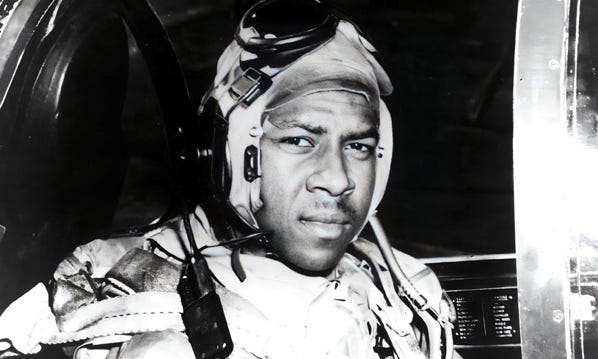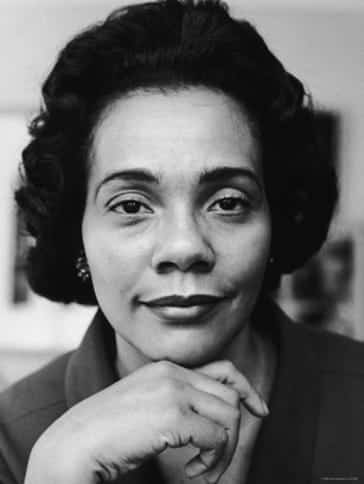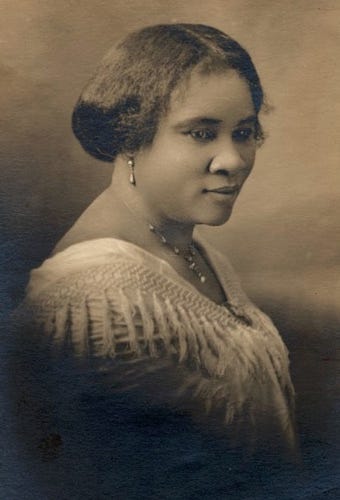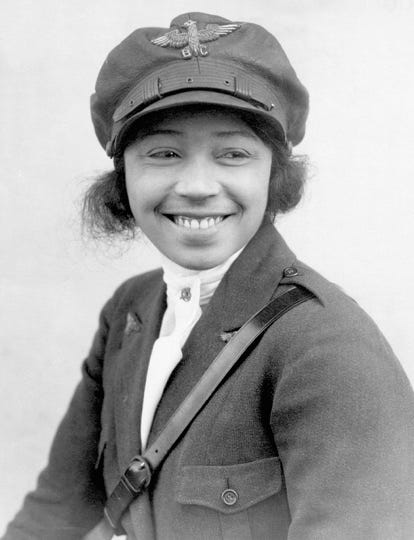It’s Black History Month
I assume we know the celebrated figures in Black history—Harriet Tubman, Frederick Douglass, Rosa Parks, and Martin Luther King, Jr., among them. But I’m learning there are so many other lesser-known Blacks with significant stories that must be told.
As someone who loves American history, I must confess I’ve been clueless about these folks. So, with a tip of the proverbial hat, allow me to briefly share three stories worth repeating—and applauding.

Jesse Leroy Brown, 1926-1950. He was just a teenager when Jesse Leroy Brown wrote a letter to President Franklin Roosevelt asking why Black Americans weren’t flying in the military.
The Tuskegee Airmen bridged that gap in the Air Force in the early 1940s, but Brown himself cleared the way for the Navy in 1947.
Soon after he became an officer, and when the Korean War rolled around, he found himself in the thick of it. Bombing targets and protecting U.S. troops on the ground, Brown distinguished himself. Then, on Dec. 4, 1950, he made the ultimate sacrifice to protect his fellow soldiers.
On a mission to provide cover for a Marine regiment on the ground, Brown’s plane was shot down. He managed to crash land on a slope, still alive but severely injured. Then, another brave pilot, Brown’s wingman named Thomas Hudner, attempted a daring rescue. He crash-landed his own plane to reach Brown, who soon after succumbed from wounds sustained in the crash.
Both men were honored by our government. Brown was awarded a posthumous Flying Cross for bravery. And Hudner received the Medal of Honor. A naval frigate, the USS Jesse L. Brown, was built and operated in the 1970s, further memorializing Brown’s sacrifice.
Here are the words spoken by the commanding officer at a gathering to commemorate the actions of these two men. “When Brown risked his life to help a Marine regiment that day, he didn’t consider their race. And when his fellow pilots saw him in danger, they did not think about the color of their skin. They only knew he was an American in trouble.”

Jo Ann Robinson, 1912-1992. An educator at heart, Jo Ann Robinson taught in public schools after graduating college in 1934. She later earned her master’s degree, and in 1949 she moved to Montgomery, Alabama, having accepted a teaching position at the state college in that city.
Becoming socially active, she was eventually named President of the Montgomery Chapter of the Women’s Political Council (WPC). This involvement linked her to the early stages of the civil rights movement, culminating in her role in the Montgomery Bus Boycott in 1955.
She used her position at the WPC to pressure Montgomery Mayor William A. Gale to desegregate public buses, but he refused. Enter Rosa Parks and her arrest on Dec. 1, 1955. Robinson and a group of activists got busy, distributing thousands of pamphlets urging a one-day boycott of city buses. The success of that effort led to an expanded boycott that lasted for months, thanks to Robinson’s efforts.
For her part, she endured harassment and intimidation, including rocks thrown through her windows and acid poured on her car. The state police finally provided protection until the boycotts ended and the buses were desegregated. She then moved from Alabama to teach in California, a catalyst in furthering the rights of blacks.

Sarah Breedlove, 1867-1919. A poor orphan, widowed at 20, Sarah Breedlove—also known as Madam C.J. Walker—is known as the first Black woman to become a millionaire in America. She did it while trying to find a cure for her own hair loss.
After experimenting with existing hair products, Breedlove developed her method called the “Walker System”—a combination of scalp preparation, lotions, and an iron comb designed for Black hair care.
Share
Breedlove eventually developed a national clientele that had been ignored by the hair industry’s mainstream marketers. Her customers were served by a recruiter base of 40,000 sales agents and beauty culture instructors, primarily Black women.
Her model encouraged entrepreneurship and offered Blacks income opportunities at a time when jobs were hard to come by.
With her success, Breedlove gave back to her community, making regular donations to Black charities like the NAACP and the Tuskegee Institute. Madam C.J. Walker’s empire is a true success story.
Well, I know I said three, but how about one more.

Bessie Coleman, 1892-1926. Bessie Coleman, denied the right to learn to fly, got her pilot’s license in France, and created a media stir as our nation’s first Black female pilot. She soon performed in air shows and used her celebrity to draw attention to racial inequality, all the while encouraging women of color to fly.
Sadly, while practicing a stunt in Florida in 1926, a wrench got stuck in the gears of her plane and she crashed. Not wearing a seatbelt, she was thrown from the plane and died instantly upon impact.
These and other Black pioneers are a credit to American history. I salute them.

Leave A Comment